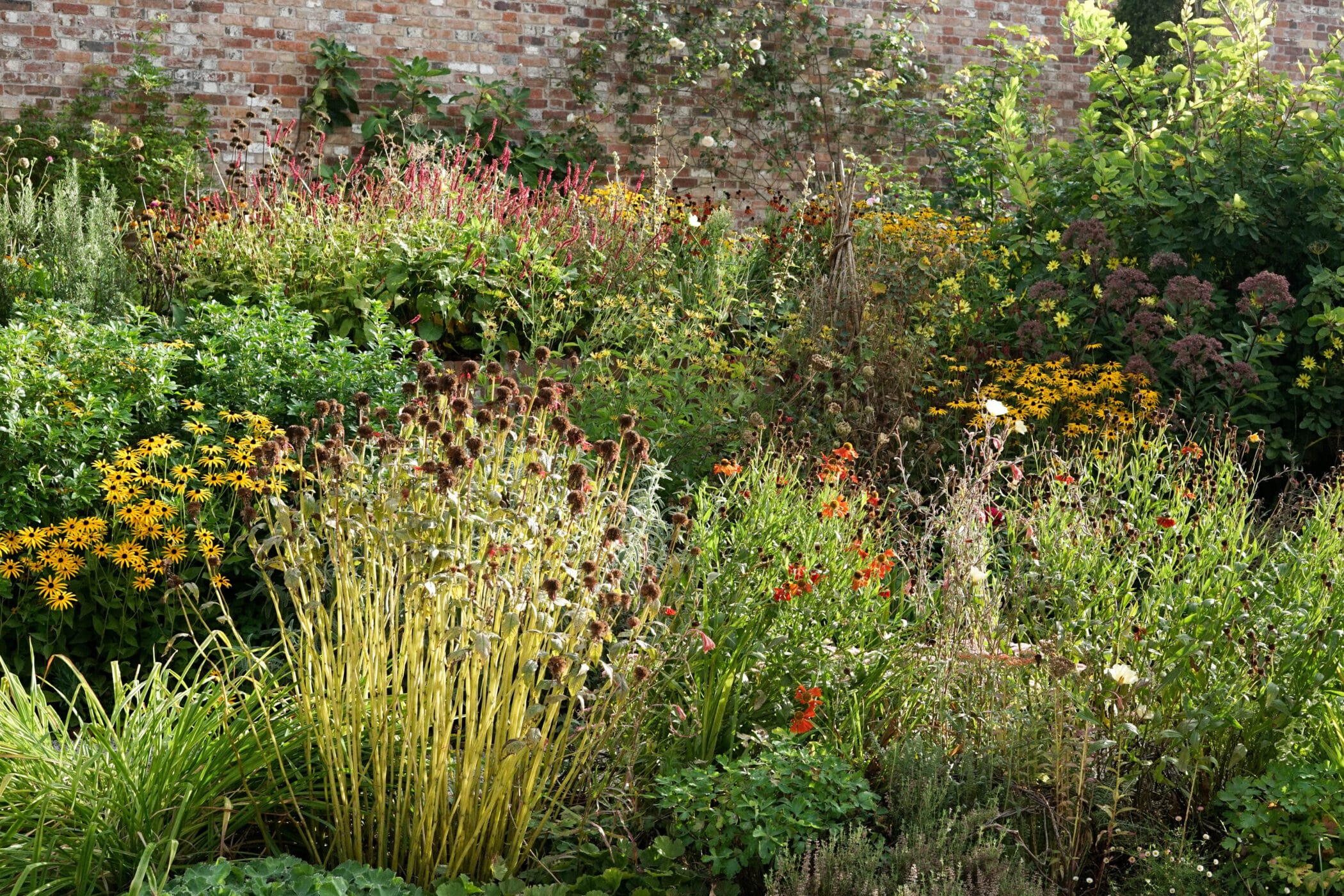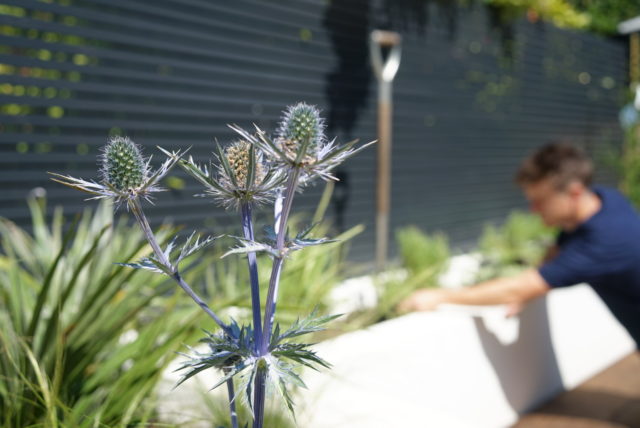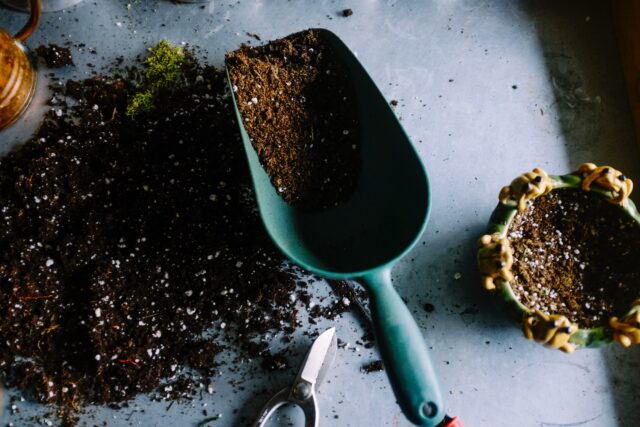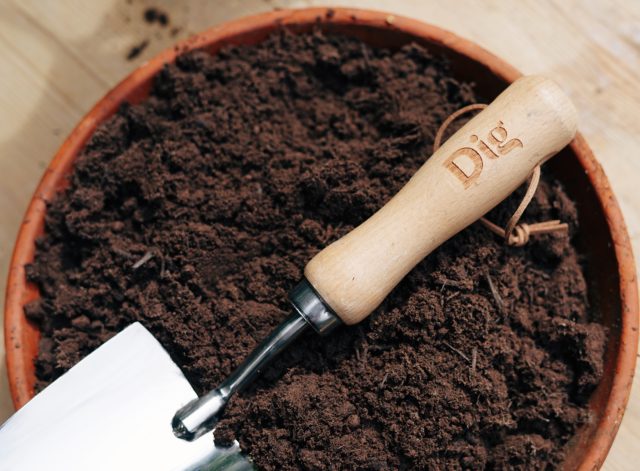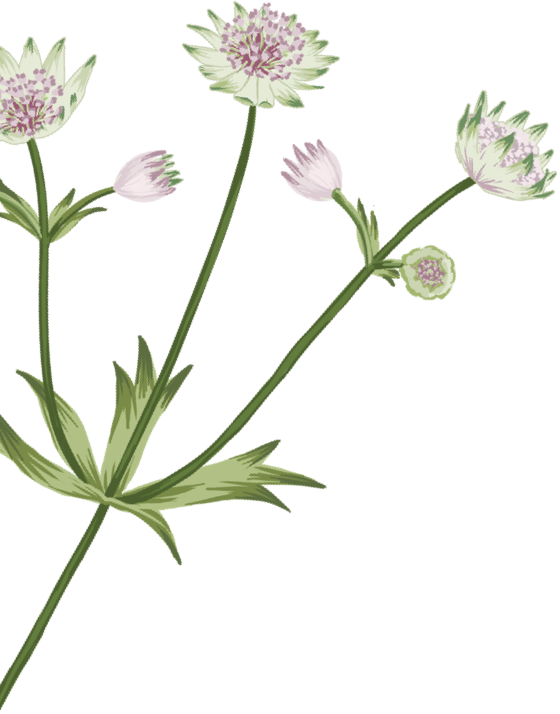It’s a perfect time to think about autumn colour – both introducing it to enjoy now and over the next few months, and to think about future years. With things slowing down in the garden, it’s also a prime opportunity to look at where there are colour gaps in your garden or outdoor space. Planting from September to December is also extremely beneficial to plants – giving them a good chance to establish before winter, for an even stronger display in spring and summer next year.
Before we kick off, a reminder that a ‘perennial’ is a plant that will return year on year – dying down once the season is over, storing strength over winter and returning the following year. An ‘annual’ is a plant that completes its life cycle in a single year – sprouting, flowering and shedding seeds before dying back. Annuals are a great way of refreshing your space, allowing you to add different pops of colour and interest that you can change each year. These recommendations should work in almost any outdoor space, and we love a bit of creative gardening and seeing what happens, but it’s also worth noting that these plants can make fantastic additions to any existing Dig Bespoke or Instant gardens. If you’re thinking about making some additions but are unsure which plants will work with each of our six themes, drop us a line at hello@digclub.co.uk.
Trees
Acer freemanii ‘Autumn Blaze’
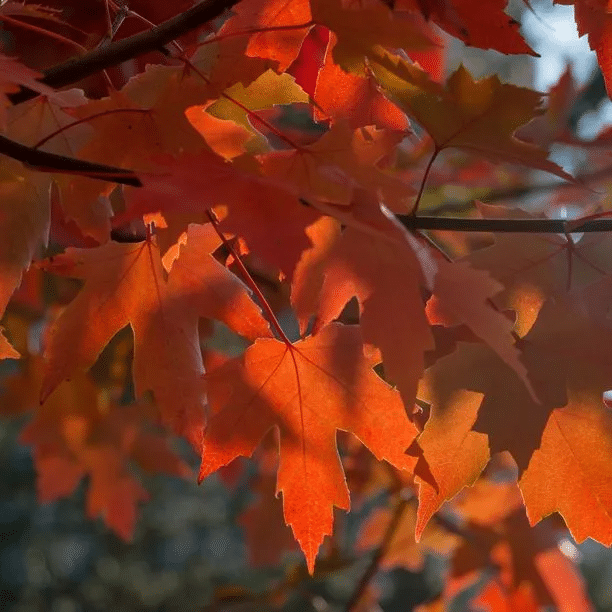
The ‘Autumn Blaze’ aka the Freeman’s Maple is a hybrid of the silver and red maple trees. This romantic, fast-growing large deciduous tree is fully hardy and resilient and one of the most reliable red maples for the British climate. As autumn draws near the green leaves begin to turn pale yellow with blushes of red before bursting into a blaze of crimsonand orange then falling.
Plant care:
Autumn interest: Leaves change to a blaze red and orange.
Maintenance level: Low
Maximum size: 8m spread x 12m height
Light level: Full sun or partial shade
Plant with: Rhododendron indicum, Heuchera ‘Plum Pudding’ and Helleborus × hybridus
Sorbus ‘Joseph Rock’
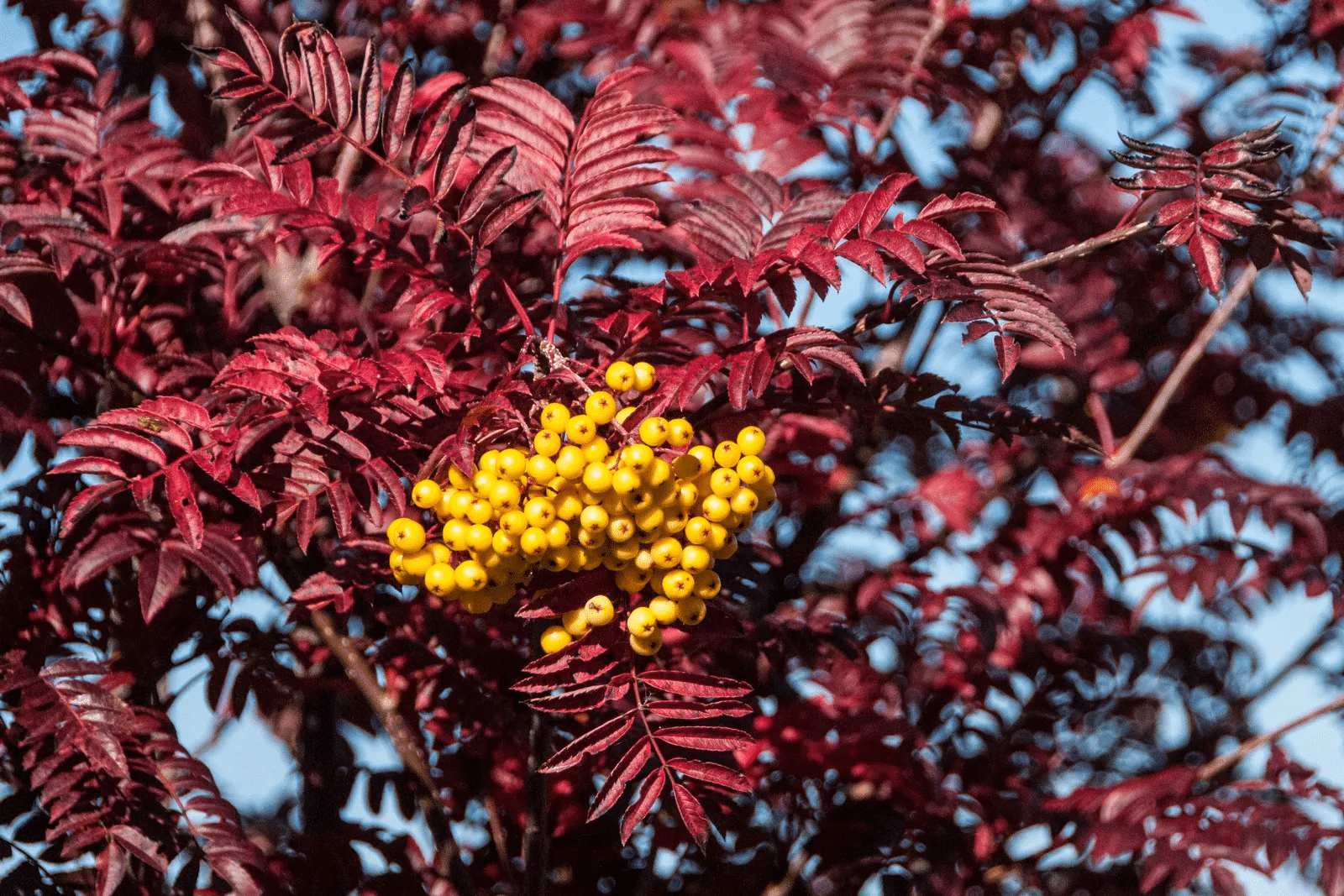
A deciduous, slow growing tree. The mid-green pinnate leaves (leaves that grow symmetrically, either side of a stem) are complemented beautifully by small white flowers in spring-summer before developing bright clusters of yellow berries in autumn. These will sit amongst leaves that will have transformed to deep red by that time of year. Berries will stay on the branches after the leaves have fallen too, which is great for providing birds with food in the colder seasons and colour into winter too.
Plant care:
Autumn: Berries morph from cream to yellow within fiery orange and crimson leaves
Maintenance level: Low
Maximum size: 8m spread x 12m height
Light level: Full sun or partial shade
Plant with: Liriope muscari, Geranium ‘Rozanne’, Dryopteris erythrosora
Shrubs
Callicarpa bodinieri var. giraldii ‘Profusion’
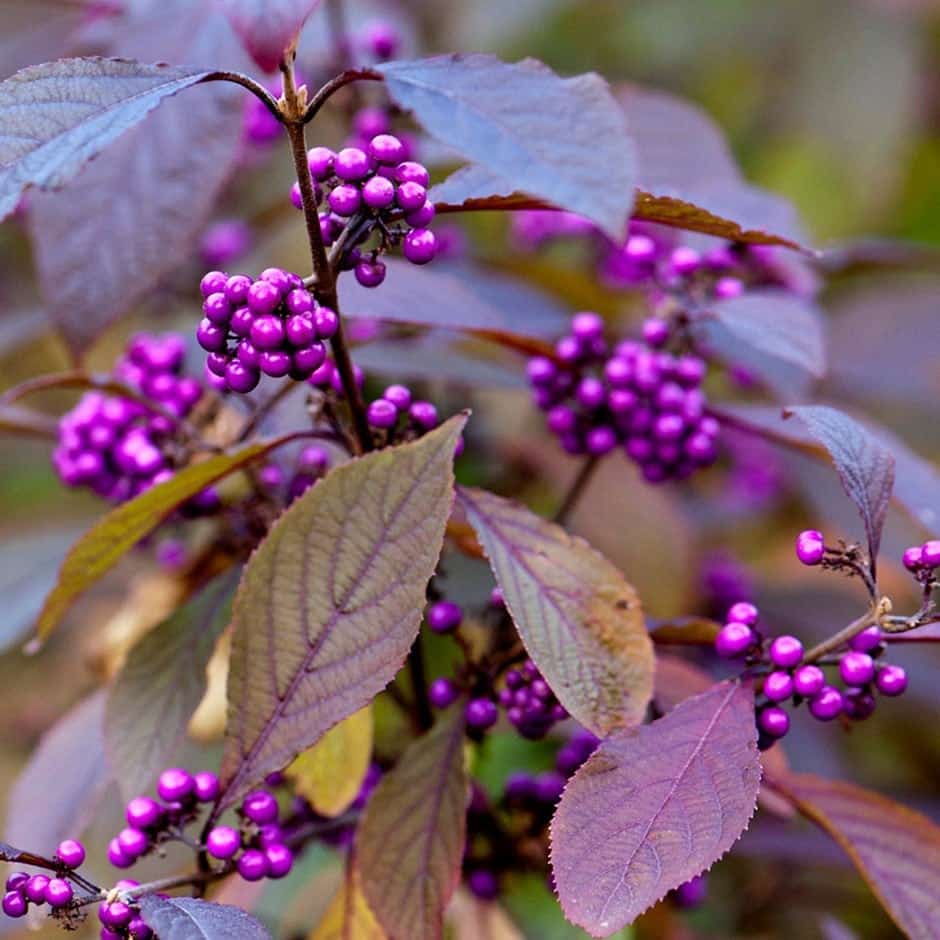
A lovely deciduous shrub with interest across all the seasons and a show of colour all year long. In spring bronze-purple foliage appears followed by small pink flowers growing in clusters and leaves turn to dark green. In Autumn, leaves become golden-purple and striking violet bead-like berries appear on mature plants which stay on even after the leaves have fallen into winter.
Plant guide:
Autumn: Leaves become golden-purple and striking violet berries appear
Maintenance level: Low
Maximum size: 2.5m spread x 3m height
Light level: Full sun or partial shade
Plant with: Cornus florida, Pittosporum tenuifolium ‘Variegatum’ or Sarcococca hookeriana
Cornus sanguinea ‘Midwinter Fire’
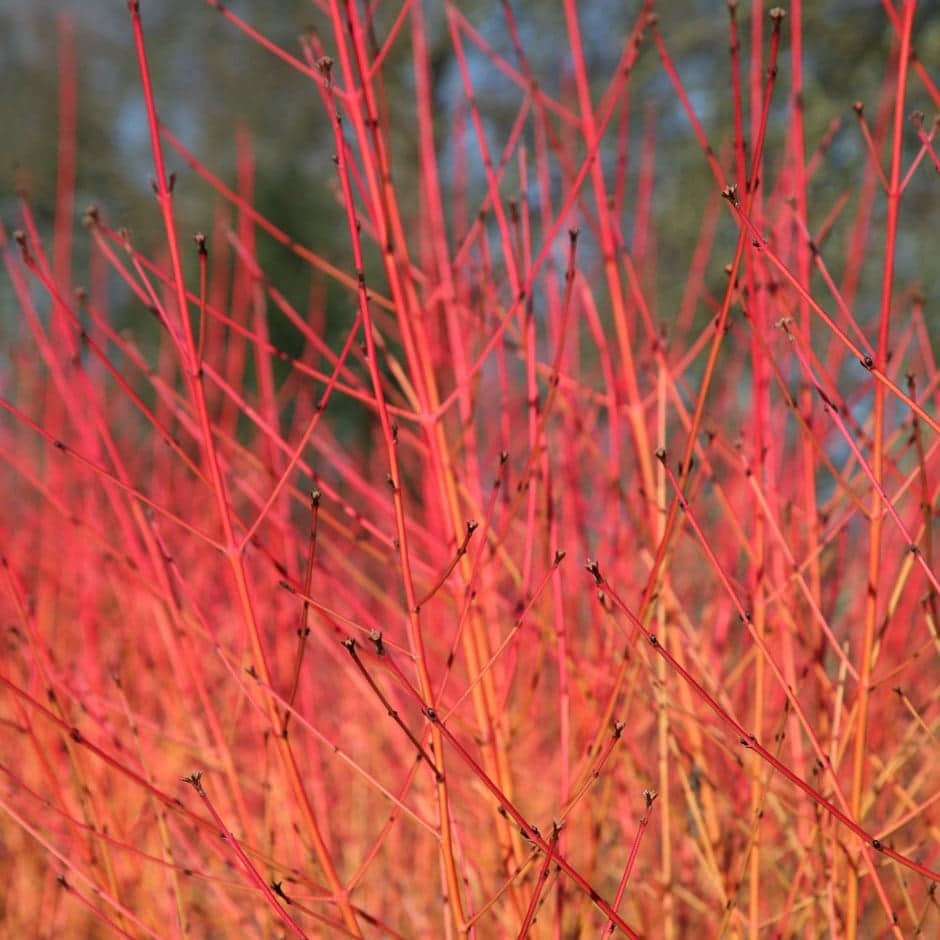
A fantastic upright, deciduous shrub that becomes the star of the show once its leaves have fallen. The bare stems reveal an ombre bonfire colour palette of crimson red, orange and mustard-yellow lasting long into winter. In summer the shrub is dressed with ivory white flowers, followed by clusters of blue-black berries.
Plant guide:
Autumn: Leaves turn bright shades of orange-yellow and bonfire-coloured stems.
Maintenance level: Low
Maximum size: 1.5m spread x 1.8m height
Light level: Full sun or partial shade
Plant with: Juniperus squamata ‘Tropical Blue’, Aster ‘Little Carlow’ or Sedum ‘Frosty Morn’
Flowers
Anemone x hybrida ‘Robustissima’
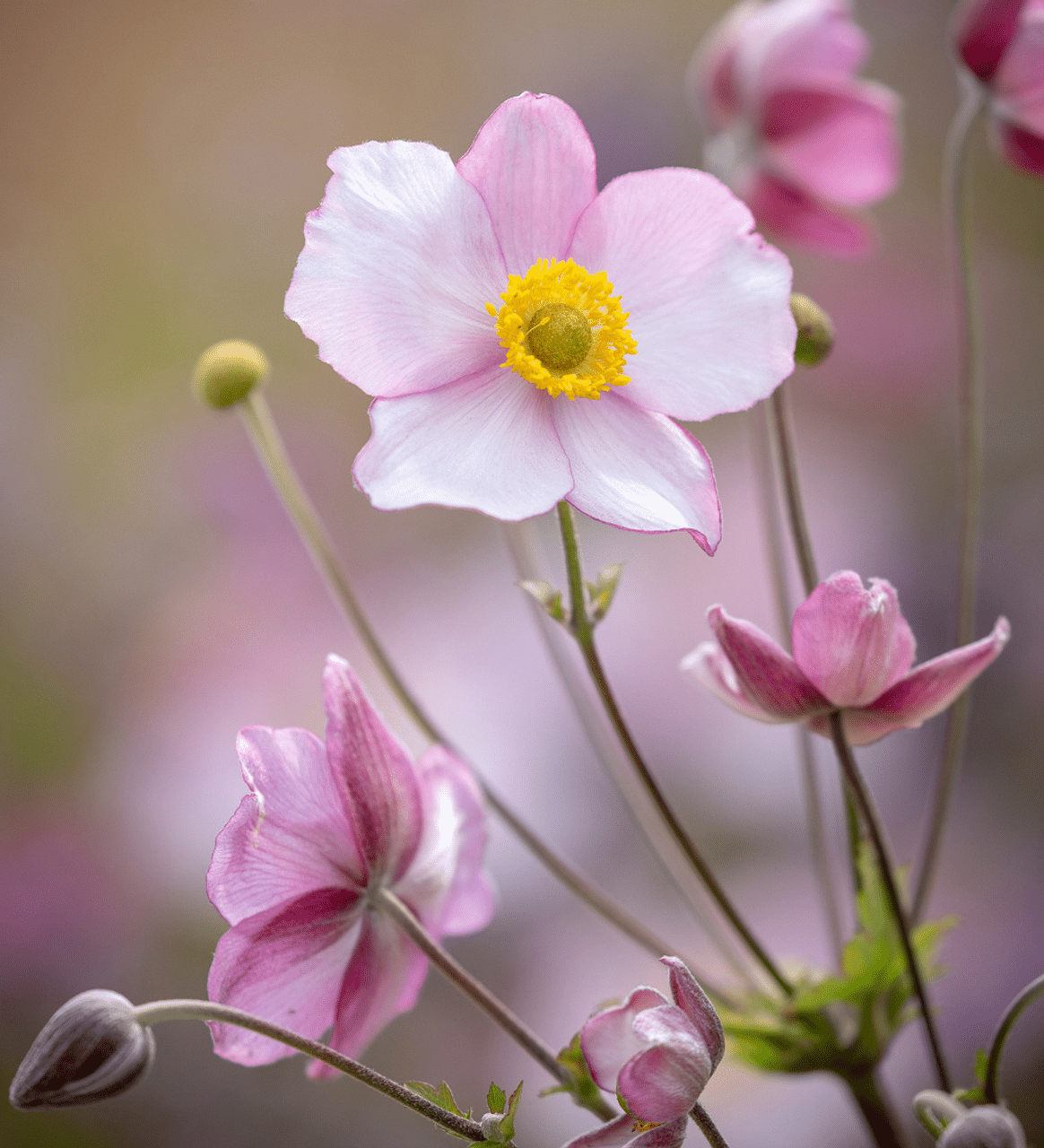
A robust herbaceous perennial variety of Japanese Anemone that continues flowering from late summer through to autumn with soft pink, saucer-shaped flowers against a flush of green foliage.
Plant care:
Autumn interest: An abundance of soft pink, delicate flowers
Maintenance level: Low
Maximum size: 0.9m spread x 1.5m height
Light level: Sun or partial shade
Plant with: Aster ‘Little Carlow’, Rudbeckia ‘Goldsturm’ and Geranium ‘Rozanne’
Dahlia ‘Happy Single Kiss’
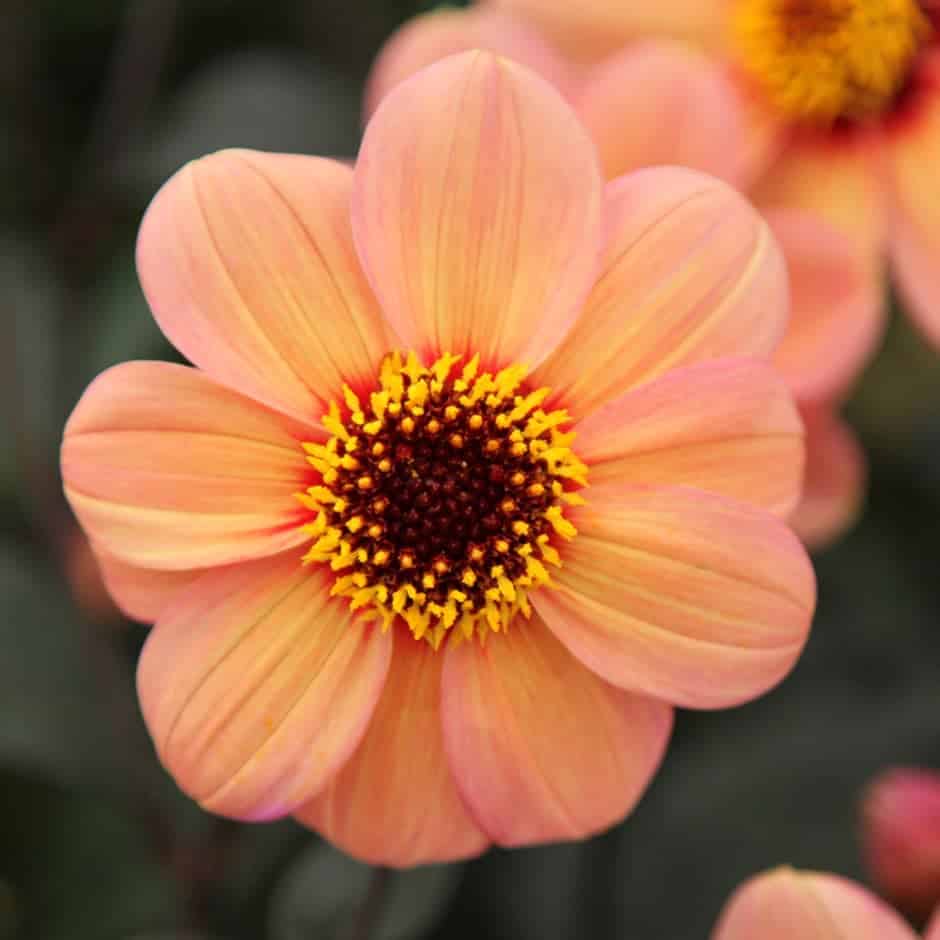
An eye-catching dark bronze-leaved late summer and autumn perennial that pairs very well with ornamental grasses and late season sedums, Achillea, and Aster. Light salmon-peach petals with raspberry streaks and rings surrounding a chocolate open centre areperfect for pollinators. For smaller gardens or terraces and sunny balconies, these Dahlias are ideal for pots, too!
Plant care:
Autumn interest: Light peach and raspberry petals around a bright yellow and chocolate centre.
Maintenance level: Low-medium
Maximum size: 1m spread x 1m height
Light level: Full sun
Plant with: Ornamental grasses like Stipa tenuissima or other perennials like Sedums and Asters
Symphyotrichum ‘Little Carlow’
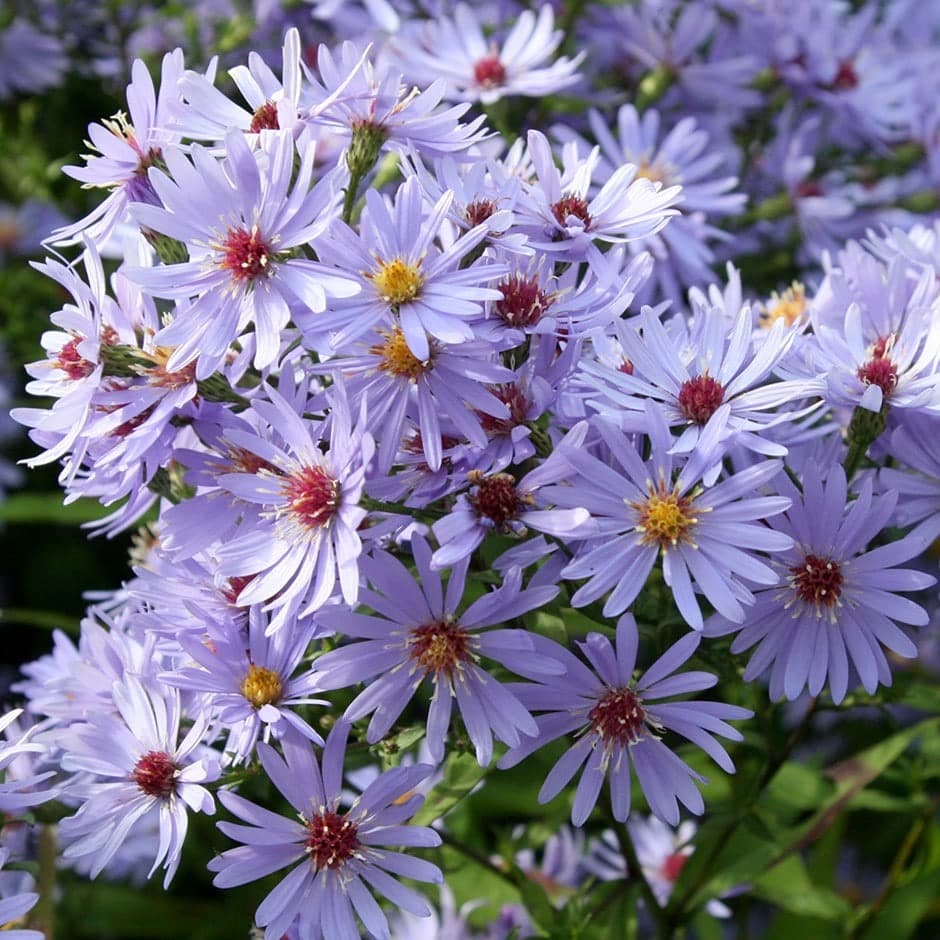
This particular variety of Aster is a hardy perennial with masses of small, purple-blue daisies with warm yellow centres appearing on soft, upright stems. Asters love some shade and will add a blanket of colour to the middle of herbaceous borders in Autumn. It’s also an important source of nectar and pollen for insects as other flowers start to fade.
Plant care:
Autumn interest: Masses of daisies with yellow centres appear and go on until mid-late autumn.
Maintenance level: Low
Maximum size: 0.45m spread x 0.9m height
Light level: Partial Shade and shade
Plant with: Rudbeckia ‘Goldsturm’, Anemone x hybrida ‘Robustissima’, Helianthus annuus ‘Claret’
Rudbeckia fulgida var. sullivantii ‘Goldsturm’
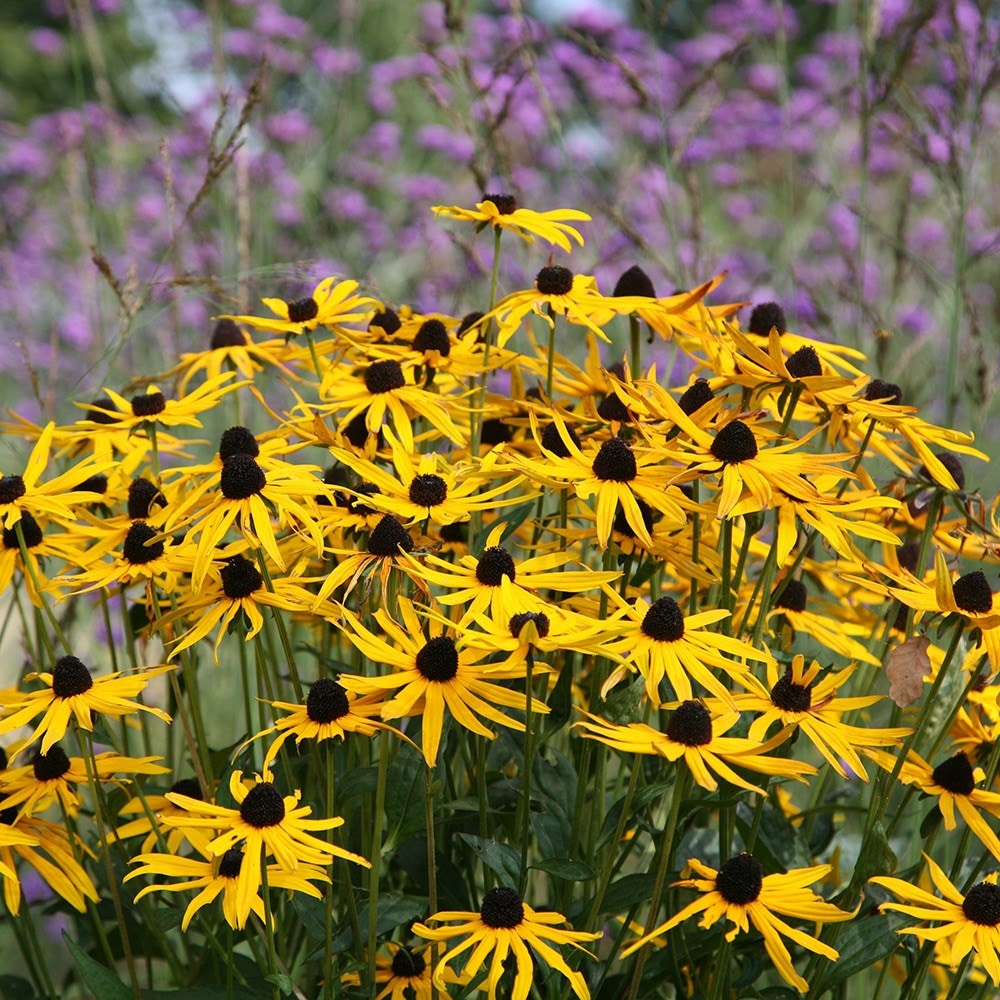
Commonly known as Coneflower, this perennial has large, golden, daisy-like flowers with cone-shaped, black centres from late summer and autumn. It likes a sunny spot, and looks great in the middle of a border that doesn’t dry out over summer.
Plant care:
Autumn interest: Clusters of large yellow-golden flowers
Maintenance level: Low-medium
Maximum size: 0.45m spread x 0.6m height
Light level: Full sun and partial shade
Plant with: Aster ‘Little Carlow’, Perovskia atriplicifolia, Stipa gigantea and other ornamental grasses
Penstemon digitalis “Dakota Burgundy”

A fully hardy and frost tolerant compact, dwarf perennial with beautiful deep, dark bronze foliage that matures to dark green and small lavender-pink trumpet flowers, similar to a digitalis. It doesn’t like being waterlogged, so planted in a location with free draining soil works best.
Plant care:
Autumn interest: Pink trumpet flowers on backdrop of dark stems and leaves
Maintenance level: Low
Maximum size: 0.45m spread x 0.6m height
Light level: Full sun and partial shade
Plant with: Astrantia major ‘Penny’s Pink’, Euphorbia epithymoides and Artemisia ludoviciana ‘Valerie Finnis’
Ground Cover
Geranium ‘Rozanne’ (‘Gerwat’) (PBR)
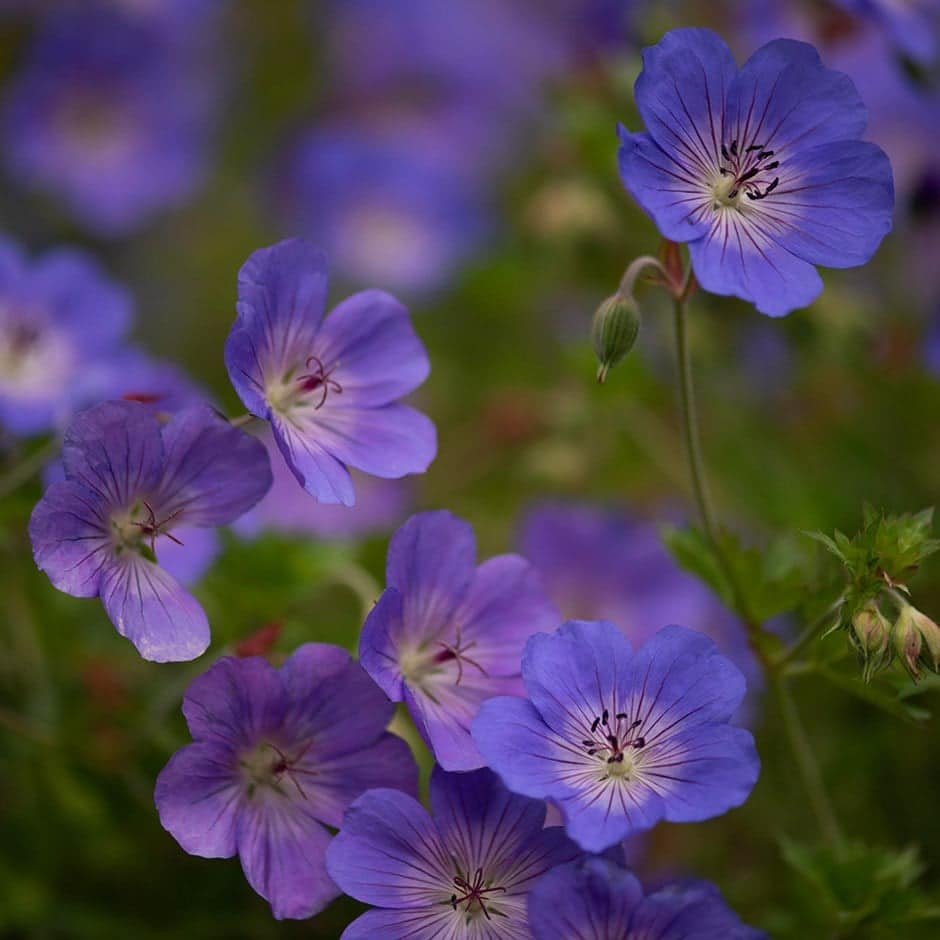
Saucer-shaped, violet-blue flowers with dusty white centres bloom throughout the summer and into mid-autumn above a bed of marbled green foliage. Perfect for underplanting, or filling a few gaps in the front of a border.
Plant care:
Autumn interest: Large saucer-like deep violet-blue flowers bouncing above green foliage.
Maintenance level: Low
Maximum size: 0.8M spread x 0.6m height
Light level: Full sun or partial shade
Plant with: Patio, shrub or climbing Roses, Nepeta cataria and Alliums
Liriope muscari
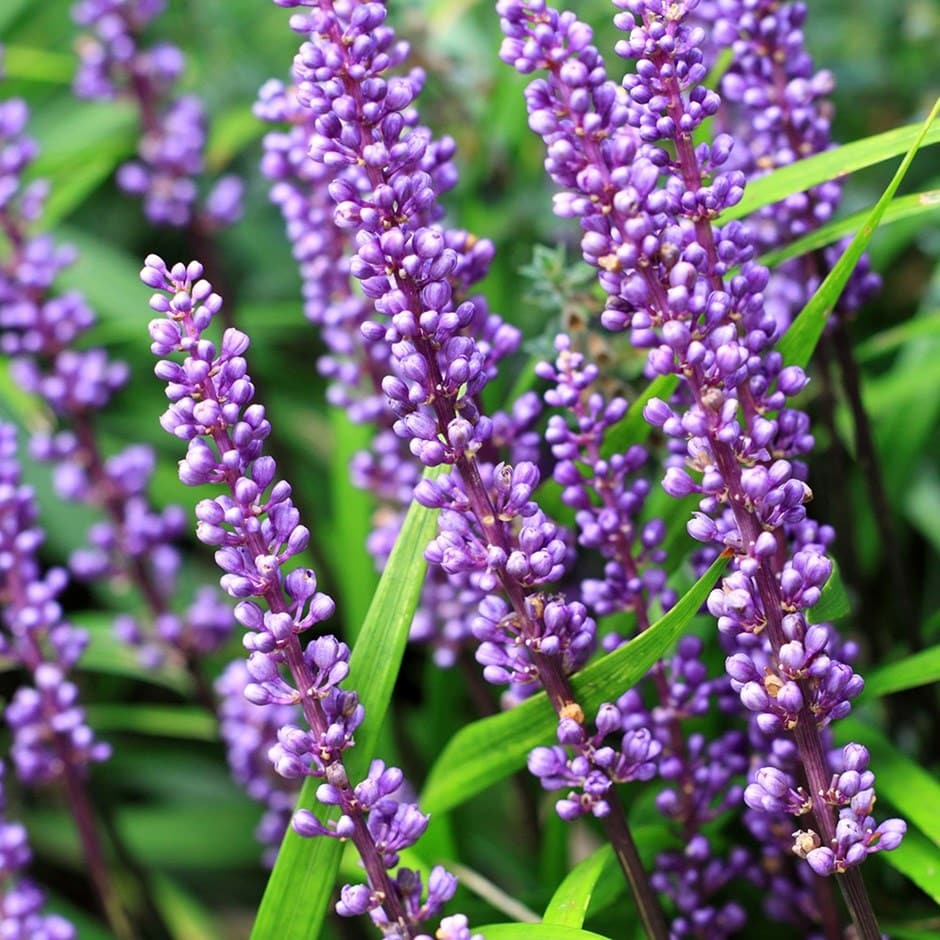
A very useful plant that can tolerate most conditions. It has dark green, blade-shaped leaves and in autumn, vibrant, long-lasting spires of deep violet flowers stand tall above the foliage. A great plant for edging small, shady spaces and adding a pop of colour in lower levels of the border.
Plant care:
Autumn interest: Wand-shaped bead-like purple flowers add a pop of colour against green foliage.
Maintenance level: Low
Maximum size: 0.45m spread x 0.3M height
Light level: Partial shade and shade
Plant with: Pachysandra terminalis, Anemone x hybrida ‘Robustissima’ and Athyrium niponicum
Grasses
Miscanthus ‘Indian Summer’
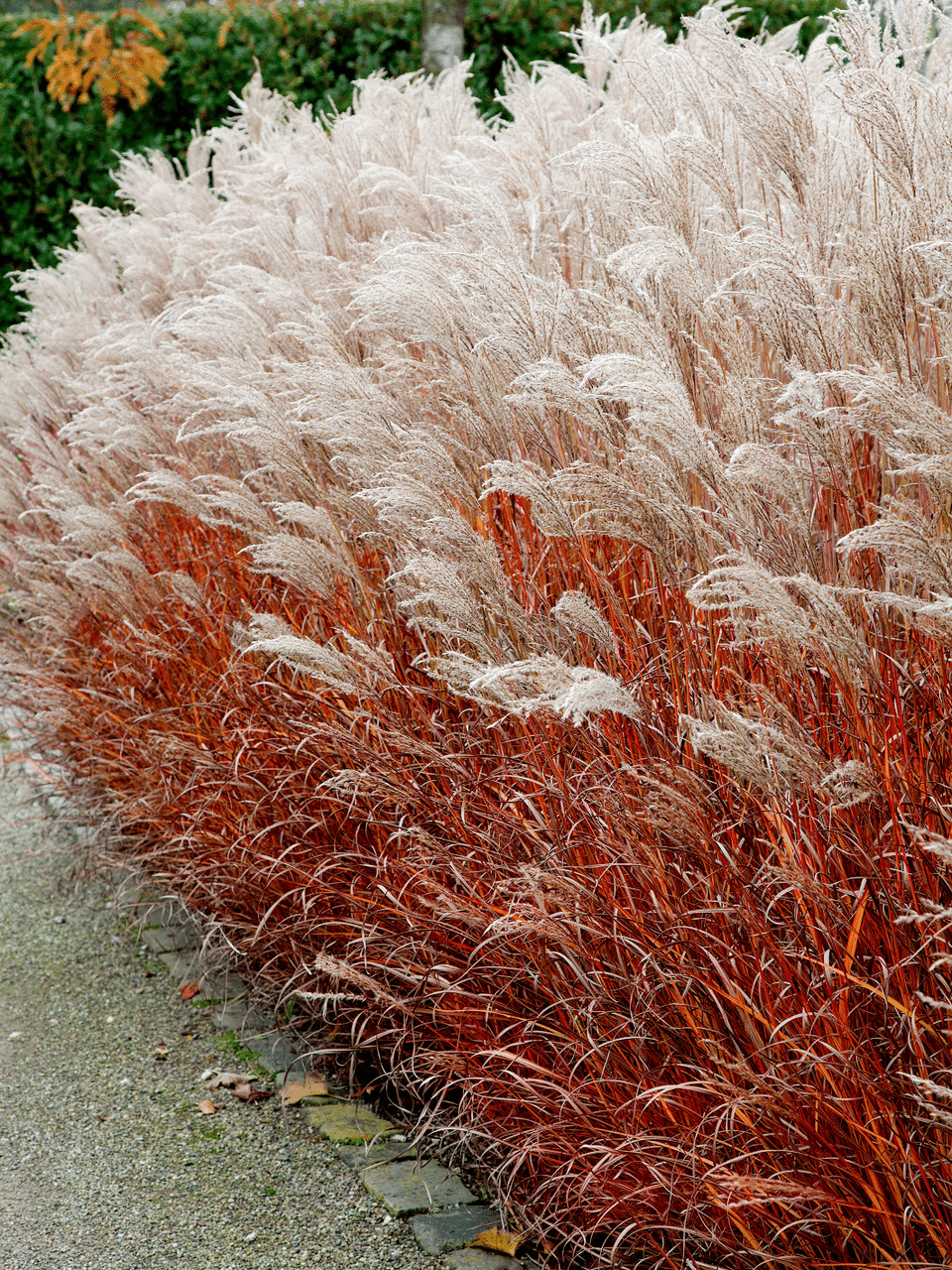
This is a resilient, tall and fast growing ornamental grass with a fantastic bronze colour. It puts on an impressive display right through from late summer into winter year on year with minimal effort. Upright stems topped with plumes of soft white feathery flowers rise above rich and fiery red and orange leaves.
Plant care:
Autumn interest: Plumes of white feathery flowers rise above fiery red and orange leaves.
Maintenance level: Low
Maximum size: 0.5m spread x 1.5m height
Light level: Full sun
Plant with: An impressive show on its own or pop in the back of a border.
Anemanthele lessoniana
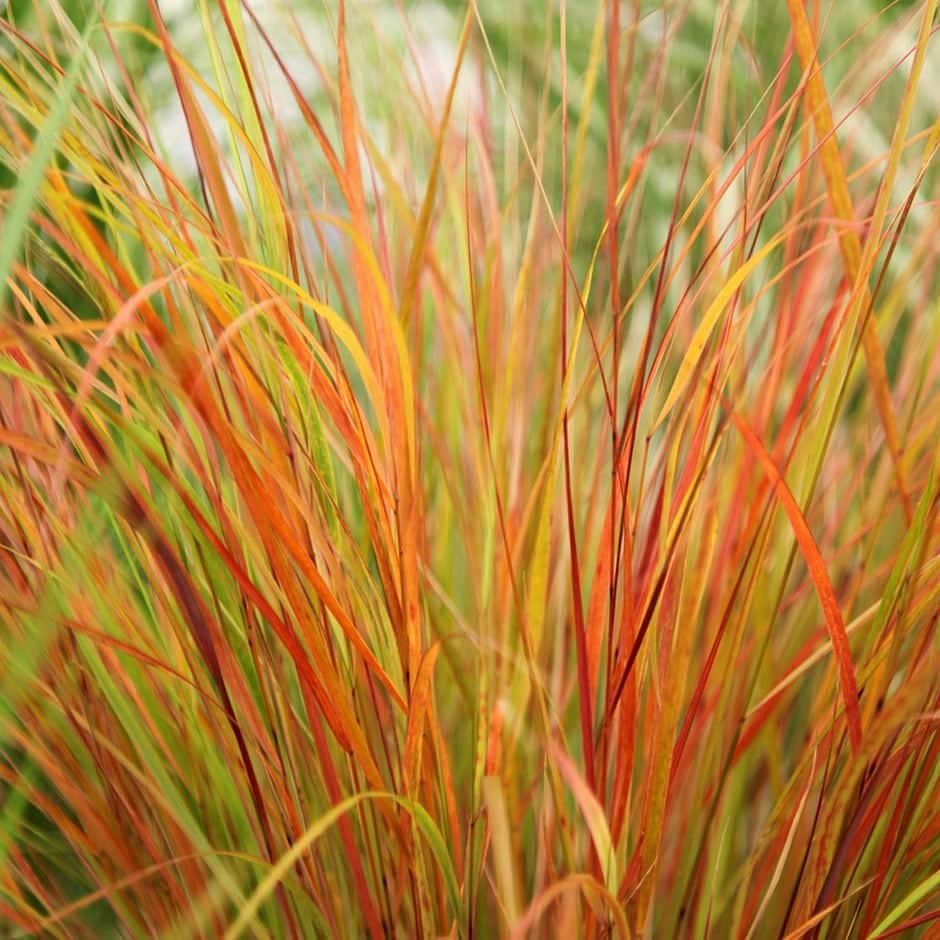
Anemanthele lessoniana or “Pheasants Tail Grass” provides year-round colour, movement and texture. It forms fountain-like spears of autumnal yellow, orange and red spotting and streaking colouring flowing through the slender semi-evergreen foliage. In the colder months the colour is even more intense and the overall effect is very romantic.
Plant care:
Autumn interest: Colour intensifies from autumn into winter
Maintenance level: Low
Maximum size: 1m spread x 1m height
Light level: Full sun and partial shade
Plant with: Gaura ‘Whirling Butterflies’, Sanguisorba ‘Cangshan Cranberry’ and Agastache ‘Blue Fortune’
Climbers
Rhodochiton atrosanguineus
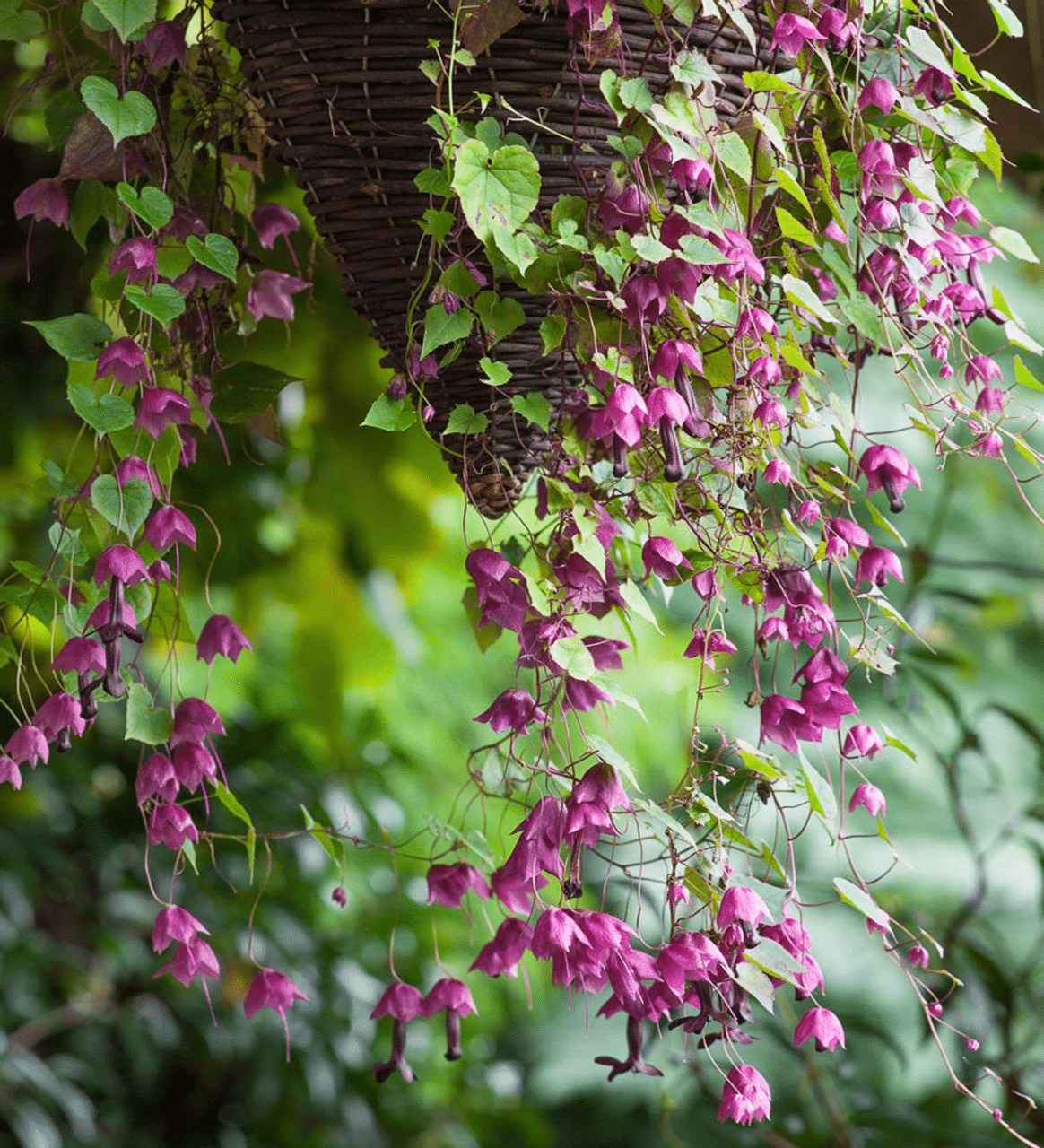
The purple bell vine has beautiful elegant hanging bells with eye-catching, rich tubular purple flowers complimenting heart-shaped green leaves. It is one of the longest flowering half-hardy perennial climbers, It can be grown as a climber or a trailer in a container.
Plant care:
Autumn interest: Hanging tubular purple bell flowers compliment heart shaped leaves.
Maintenance level: Low-Medium
Maximum size: 3.6m spread x 2.4m height
Light level: Full sun
Plant with: Have on its own or pair with Thunbergia alata ‘African Sunset’

